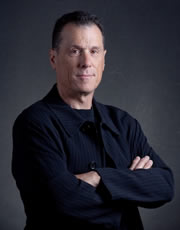 I have been thinking and writing a lot about aspirational ideologies that are apropos of contemporary life. Aspirational ideologies are perhaps, the contemporary answer to the manifestos of the 20th century. There are too many out there to discuss, however those I am most interested in, address evolutionary thinking in the arts. I use that term not in the Darwinian or even the conservative art-historical dream of a “theory of evolution” in art itself, but rather in the way in which art evolves in the context of the contemporary. In that sense, I am interested in hybridity in practice and in organization; in the way in which artists and institutions, blend old and new technologies of reproduction and generative methods toward the aspirations of contemporary cultures. I am interested in the schemas of art in an educational matrix; how we integrate the idea of the arts into the fabric of education and even further how education might evolve into new models as well. I am fascinated with The Khan Academy in that sense; an online learning community that freely distributes knowledge in Math, Science, Economics, Arts and Humanities and Computing. The Khan Academy is a responsive educational matrix that, rather than arguing for a particular manifesto (other than knowledge should be “free”) reifies the idea of flocking and thought communities and hot spots of knowledge production. It simultaneously echoes the traditions of oral history and auto-didacticism in that one can be educated in conversation with knowledge holders and as an individual in search of certain truths outside of institutional programs and indexes. In a many ways, this is a post-disciplinary, creative collaboration that was/is pre-ordained; if knowledge is de-linked from such restrictions that make its apprehension improbable, (it’s cost and other roadblocks) then knowledge flows freely, finding its own consumers along the way.
I have been thinking and writing a lot about aspirational ideologies that are apropos of contemporary life. Aspirational ideologies are perhaps, the contemporary answer to the manifestos of the 20th century. There are too many out there to discuss, however those I am most interested in, address evolutionary thinking in the arts. I use that term not in the Darwinian or even the conservative art-historical dream of a “theory of evolution” in art itself, but rather in the way in which art evolves in the context of the contemporary. In that sense, I am interested in hybridity in practice and in organization; in the way in which artists and institutions, blend old and new technologies of reproduction and generative methods toward the aspirations of contemporary cultures. I am interested in the schemas of art in an educational matrix; how we integrate the idea of the arts into the fabric of education and even further how education might evolve into new models as well. I am fascinated with The Khan Academy in that sense; an online learning community that freely distributes knowledge in Math, Science, Economics, Arts and Humanities and Computing. The Khan Academy is a responsive educational matrix that, rather than arguing for a particular manifesto (other than knowledge should be “free”) reifies the idea of flocking and thought communities and hot spots of knowledge production. It simultaneously echoes the traditions of oral history and auto-didacticism in that one can be educated in conversation with knowledge holders and as an individual in search of certain truths outside of institutional programs and indexes. In a many ways, this is a post-disciplinary, creative collaboration that was/is pre-ordained; if knowledge is de-linked from such restrictions that make its apprehension improbable, (it’s cost and other roadblocks) then knowledge flows freely, finding its own consumers along the way.
Aspirational ideologies are all around us in an institution of higher education and those ideologies manifest in ways that are certainly evolutionary and often revolutionary. As students flock around a particular methodology of making or a political mode of responding to or articulating a social agenda, we are the beneficiaries of the esthetic outcomes of those entrainments; the collaborations and real-world outcomes of new knowledges in practice.
Douglas Rosenberg
Professor and Chair, Art Department
